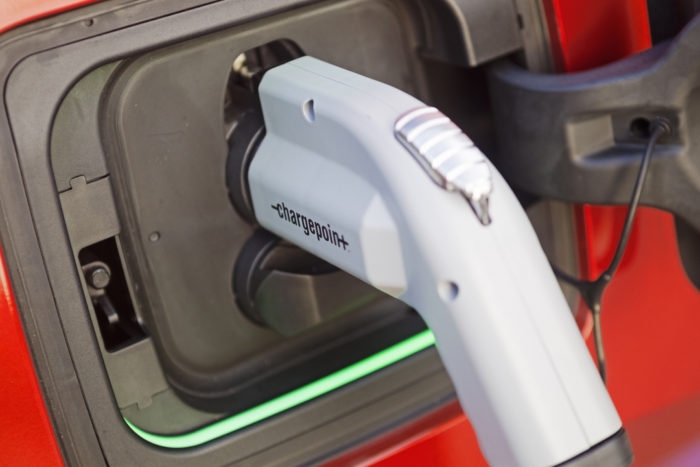
Image Credit: Automotive Rhythms via Flickr
This post originally appeared at Ensia.
Two years ago, Michigan’s largest utility, Consumers Energy, sought state approval to build a $15 million electric vehicle charging network paid for by ratepayers. It was the first plan of its kind in Michigan, and sought to position the state as a “leader in renewable transportation.”
However, the plan raised a series of policy questions. Should people who don’t drive EVs be required to subsidize EV infrastructure? Where will the stations be located? And what about the implications for private charging companies?
Ten months later, Consumers formally withdrew the plan based on widespread opposition. But it wasn’t a total loss. The proposal sparked a deeply involved stakeholder process by the Michigan Public Service Commission (MPSC) to address the policy questions around EVs and how Michigan — the automotive capital of the world — can be a leader. The first utility pilot programs for charging stations and rate structures are expected soon. With the right “price signals” and properly locating charging stations, the MPSC says all utility customers could benefit from “increased electrification of the transportation sector.”
Michigan isn’t alone in navigating the public policy waters around mainstreaming electric vehicles. Forty-three states and the District of Columbia took more than 200 legislative or policy actions last year related to EVs. And none too soon: 7 million electric vehicles are expected to be on U.S. roads by 2025, up from about 740,000 at the end of 2017, as the price of EVs approaches parity with that of gasoline-powered vehicles and public charging stations become increasingly available.
At the same time, utilities and clean energy groups have formed a rare alliance around EVs, which can not only reduce greenhouse gas emissions but also provide a revenue lifeline for power companies facing decreasing or stagnant electricity demand.
The growing interest in EVs portends big changes in infrastructure, from gas stations to mechanic shops to electric utilities to tax structures and the wiring in our own garages. What can we learn from early-adopter communities about what it will take to gear up for EVs?
Encouraging the transition
Many states and utilities are setting into place incentives to spur adoption of EVs. These include rebate programs to get the sticker price into range of traditional internal combustion, gasoline-powered vehicles; providing recurring incentives to owners, like the right to use high-occupancy vehicle (HOV) lanes or discounted or free parking; and requiring automakers to sell a certain percentage of zero-emissions vehicles (ZEVs) based on overall sales. A review by the North Carolina Clean Energy Technology Center found 17 states “considered policy changes to encourage electric vehicle market development.”
One big one is encouraging the development of infrastructure needed to charge EVs (you’ll find an interactive map showing charging stations here). The Edison Electric Institute (EEI), a trade group representing investor-owned electric utilities in the U.S., projects nearly 5 million charging stations will be required to accommodate 7 million electric vehicles on the road.
Kellen Schefter, manager of sustainable technology at EEI, says charging infrastructure is “a lever our companies could pull. If they could help get more charging infrastructure out there, that will drive EV adoption.”
Yet paying for that infrastructure is an ongoing discussion in states. Often, utilities propose to charge all of their ratepayers for the cost of building stations only EV drivers would use. That EV charging can actually benefit all ratepayers — if done correctly — is becoming clearer and could justify public funding.
“There is no business case in public [charging] infrastructure,” says Gil Tal, research director at the Plug-in Hybrid and Electric Vehicle Research Center at the University of California, Davis. “We need communities, the public and utilities to help support it in the early phase.”
Grid impacts
For utilities to underwrite charging infrastructure — be it rebates for home chargers or paying for public chargers — regulators need to know whether all ratepayers and the grid benefit beyond the immediate impacts of fewer greenhouse gas emissions.
John Farrell, director of the Energy Democracy Initiative at the Institute for Local Self-Reliance, says the EV deployment level now does not hurt the grid — since EVs make up about 1 percent of the cars on the road worldwide — but concerns are likely to grow as more drivers charge their vehicles.
If companies incentivize or enroll customers in programs for charging during off-peak times of demand, however, “that improves the efficiency of the system and puts downward pressure on our electric rates,” Schefter says. “In an environment where other things cause costs to go up, we see electric vehicles as balancing those costs a bit.”
California — home to roughly half of the electric vehicles in the U.S. and where ZEVs’ market share increased from 3.6% to 4.5 % from 2016 to 2017 — is proving to be a test case on infrastructure build-out and charging programs for other states, Farrell says. The American Council for an Energy-Efficient Economy recently highlighted Southern California Edison’s options for EV drivers that include tiered rate designs — a traditional billing plan based on energy usage — as well as time-of-use rates that are cheaper when grid demand is low. Southern California Edison is also among the few utilities exploring the potential of smart charging, which finds the best time for charging based on electric rates and grid demand. In this case, EV drivers have pricing options based on their flexibility to charge.
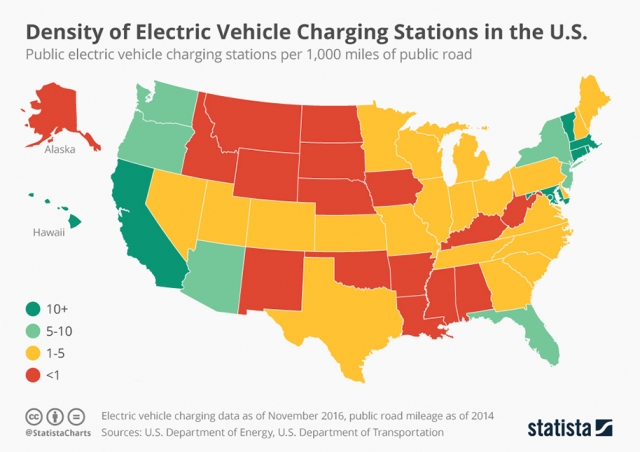
Two more California utilities — Pacific Gas and Electric Co. and San Diego Gas & Electric — are also piloting infrastructure programs calling for thousands of public charging stations.
Tal says maximizing grid resources also depends on the source of generation. For example, places like California and Minnesota with excess solar power during the day may encourage drivers to charge then, most likely at work.
Dan Bowermaster, electric transportation manager with the Electric Power Research Institute, says utilities could take a page from the telecommunications playbook when it comes to pricing incentives.
“The idea is like free minutes during nighttime and weekends,” he says. “What if utilities came up with free lunch-time charging? The point is, for most people there is a lot of flexibility. At the end of the day, the potential is there for serving a substantial amount of increased load with minimal investment in new assets.”
Utilities are also piloting programs that automatically enroll customers in variable-pricing programs whose rates are based on real-time changes in grid load and allow them to opt-out, as opposed to requiring them to opt in.
“That’s probably the right way to do it,” Farrell says. “The great thing about it is we’ve been kind of dumb about the way we’ve used the grid so there are a lot of opportunities for savings.”
Regulatory changes
Across the U.S., state utility regulators are leading the policy discussion around charging rate structures, utility rebates and deciding who pays for charging infrastructure. States such as Illinois and Michigan have recently assembled stakeholders around these policy unknowns.
Michigan Public Service commissioner Norm Saari said the agency’s review focuses on four points ahead of utilities’ formally filing EV programs: customer access to information, the impact on the grid, infrastructure deployment and rate design.
“We don’t try to predict what the future will be,” Saari, a former Consumers Energy official, says. “Nevertheless we think there is the potential for concern when tens of thousands of electric vehicles will be plugged into a charger.”
Another key component of public EV charging involves the reselling of electricity. In places where that’s prohibited, station owners charge flat hourly rates rather than charging for use by kilowatt-hour.
In its 2017 annual review, the North Carolina Clean Energy Technology Center (NCCETC) notes that rules for reselling electricity “vary significantly” across the U.S., and in some cases it’s unclear whether it can be resold at stations. The report says regulators in four states — Alabama, Delaware, Indiana and Pennsylvania — considered the issue last year.
Revenue impacts
With more electric vehicles on the road, states and the federal government would in turn see less revenue from gasoline taxes than they would if those vehicles were gas-powered. The NCCETC report says the most common state policy actions involved “additional registration or other fees for electric vehicle owners.”
Until now, states have commonly approached the issue with annual registration fees for EV drivers. Yet experts say this is largely punitive and not a long-term solution. Also, it’s not particularly reflective of road use if an EV driver is charged the same if they drive 1,000 miles a year or 10,000 miles a year.
U.S. Rep. Sam Graves from Missouri, advocates a tax based on vehicle miles traveled (VMT) as an alternative to increasing the federal gasoline tax. While some states, including Oregon and Colorado, have piloted the idea, the proposal faces obstacles among conservative lawmakers and privacy advocates. The American Civil Liberties Union has fought VMT programs in states that use GPS tracking devices to measure mileage, instead supporting options such as annual odometer readings.
Advocates see room for growth with performance-based taxes that not only account for, say, vehicle miles traveled, but also more sophisticated regional-based measures that consider energy consumed, vehicle weight and how many people are in the vehicle, Tal says.
Jürgen Weiss, an economist and principal at The Brattle Group, agrees.
“The right way to charge for using roads has to do with how often you use the roads and may have to do with how heavy your vehicle is,” he says. “Over time we’ll definitely have to think about another way of doing it.”
Andy Balaskovitz is a freelance energy and policy reporter based in Grand Rapids, Michigan.
Weekly Newsletter
Get building science and energy efficiency advice, plus special offers, in your inbox.





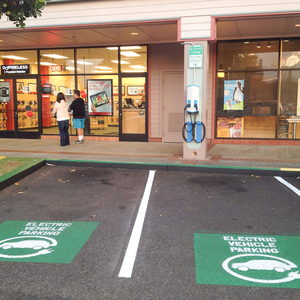
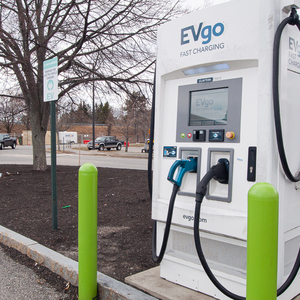
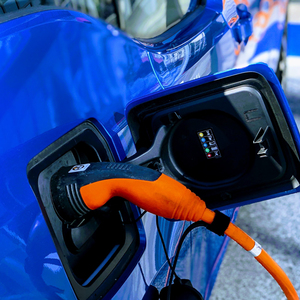
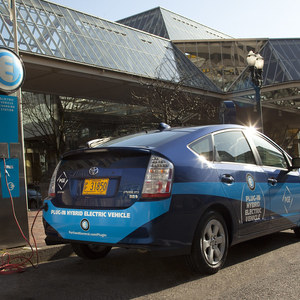






26 Comments
> Should people who don’t
> Should people who don’t drive EVs be required to subsidize EV infrastructure?
I prefer to to ask "should people won't don't drive EV's continue to be subsidized for the environmental damage they cause?".
> how heavy your vehicle is
My understanding is that pretty much all road damage is caused by heavy vehicles.
> variable-pricing programs whose rates are based on real-time changes in grid load
Hopefully not just load but the real-time renewable/fossil mix.
Overall, there is lots of focus on money flow and little on the environment.
If residential customers were
If residential customers were to pay for power based real time costs to the utility how is the customer going to be aware of that price in real time? Would such a price structure increase the end month bill for the customer? And if so, what systems would be put in place to help people that are already energy poor?
I have a hard time believing any change in rate structure would end with the power companies getting less money.
Five minute wholesale markets already exist @ Calum Wilde
In some grid areas with competitive power generation with markets managed by the grid operators power pricing is cleared on 5 minute tighter intervals, and many with half-hour or 1 hour clearance. It doesn't take a whole lot of smarts in a smart meter to be able to updated the spot pricing. It's more complicated when the full retail pricing includes fixed rate PPAs from particular generators, and things like capacity payments that are not time dependent, as well as the day-ahead market. But it doesn't take a supercomputer-smart metering system to be able to update and display the current retail price in real-time, and there are plenty of smart meters that already do exactly that.
Of course with vertically integrated regulated monopoly systems none of that real-time information is visible to the ratepayers, and in many cases isn't even known to or tracked by the utility.
Smarter appliances (and especially smart EV chargers) can easily take advantage of real time price reporting mechanisms.
Ratemaking is a complex topic, and it's never fully "fair" to all ratepayers, which allows low volume customers in remote locations to not be fully charged for the infrastructure keeping them hooked up to the grid. A lot of fairness is sacrificed on the altar of clarity & simplicity to allow the less well-off to have access to the grid at affordable pricing. Most of the rate structures used in North America need major overhaul to manage the dual tsunamis of EVs and variable output renewable generation that is coming within the next decade, but done right they can work together, improving throughput on the existing grid (more power moved on the same wires & transformers) while improving grid stability and lowering costs.
In Denmark EV owners can get paid to be hooked up to smart chargers controlled by the utility or grid operator, which allows them to use the battery as a smart load (and sometimes as an energy source) for maintaining a high level of frequency & voltage control. Those payments to EV owners is typically less than they would otherwise have to pay for higher spinning reserve capacity or other standard methods of providing those ancillary grid services. Even 1-way power flows (grid to EV battery) is remunerated for grid stabilization services. The energy is better than free- they pay the EV owner to accept it (albeit in drips & drabs), but not necessarily with a guaranteed time frame for reaching full charge. This can be an important tool for managing grids that have a large amount of variable output generation such as solar or wind power.
EV remote rapid charging
Of the electric charging stations 17,706 total shown on the map, 16,722 are Tesla.
Tesla North America has 1,229 Supercharger Stations with 9,623 Superchargers ...
https://www.tesla.com/supercharger
Most will charge at home almost always. Tesla supercharging is already available to get almost anywhere in the US, and is growing rapidly here, and in the rest of the world. See the map above.
Musk has said repeatedly that he has no interest in moats. No one has approached Tesla to-date,
regarding use of their super charging network.
@Jon R
At the federal level non-ag diesel fuel is taxed a couple of pennies/gallon higher so ya heavy trucks are taxed at a higher rate since they're almost always diesel powered.
Remember that an increase in taxes is ultimately borne by the consumer in some form/fashion. There's no free lunch.
Keep it simple
The simple step is to buy an EV and charge at home from your rooftop solar. I just bought a used Nissan LEAF a couple of months ago. My PV had produced about 30% extra last year and in Arizona the laws allow the utility, APS to pay me next to nothing for the excess.
I now choose to use that excess for my car. Got it just in time to dodge the $3/gal price. Whew! The 2015 model I bought for $12,600. Even though it has 38k miles on it, the gauge shows I am still at 100% life on my battery. If you shop for a used EV make sure the dealer fully charges it so you can see battery life. I got a used car that is almost brand new! I use it for around town only. It has all the modern bells and whistles. Keyless entry, bluetooth, etc...
No trip in Flagstaff is more than 15 minutes. This around town driving is 80 to 90% of our total driving. The car would not be able to make a trip to Phoenix as the nearest charging station is over the 85 miles I get on a full charge.
For us, we have a second car, a 2015 CRV. Other options would be to rent a car, which is probably cheaper than owning a second car.
So, I don't worry about charging stations at all! Never have needed one. My carbon footprint is very small, considering my house is near net zero and now the other half of my foot print is near zero! Not a solution for everyone, of course. Some drive a huge number of miles everyday to work. But if you can, keep it simple!
cost shifting
Hopefully this isn't about tax increases but is about correctly allocating costs. Once that happens, behavior should shift to be more optimal. This is a partial "free lunch".
Some things are very non-optimal (burning coal comes to mind) and this is a form of "overpriced lunch".
> buy an EV and charge at home from your rooftop solar
I suspect you are actually talking about charging it from the utility and then paying back this usage later. This is not environmentally equivalent.
big picture
Charging will be done at home, overnight, almost always.
When is the last time you took a long-long-long distance road trip, versus flying?
Related: "Incumbents’ Structural and Fiscal Shackles" ...
http://tesla.dauger.com/disrupts/incumbentsshackles.html
compliance
"GM CEO reaffirms ‘commitment to electric vehicles’ while supporting revision of fuel consumption rules"
https://electrek.co/2018/05/14/gm-ceo-commitment-to-electric-vehicle-fuel-consumption-rules/
Compliance cars. Devil is in the details.
cars
My father was in the car business. I know cars inside and out.
A Tesla Model 3 obliterates the incumbent equivalents, on the merits,
including my 18 yr old BMW 3 series, energy source ignored.
All that's required is a long distance rapid charging network, and that exists,
and is expanding rapidly. The future is a foregone conclusion.
Thanks, Elon.
@Dana Dorsett,
Thanks for the
@Dana Dorsett,
Thanks for the information.
I fully agree with this "Most of the rate structures used in North America need major overhaul to manage the dual tsunamis of EVs and variable output renewable generation that is coming within the next decade,"
What I'm worried about is how inelastic power demand is for low income residential customers. Considering the duck curve and how that's effecting power prices at certain times of day, a price structure where the price can change as often as every 30 minutes or even every 5 minutes there's a lot of potential for low income customers to end up paying vastly more than they do now. At the same time higher income customers will be better able to purchase smart controllers for their water heater or EV's with smart chargers, etc. to shift their demand and end up with a lower bill.
If the power companies and/or local government are supplying the smart controllers then I think it's a great idea. Otherwise I'm not a fan of a pricing structure that can change multiple times per day. This was also part of my motivation behind my recent post in the Q&A section about trying to find cost effective ways to shift demand. My reading on the subject is leading me to believe this price structure is all but inevitable.
On a different but related topic, have you seen any studies on how smart chargers that allow the traction battery in EVs to be used as a source effects the life span on those batteries? I've looked around a bit but didn't find anything directly related to smart chargers, just charging cycles. The use of traction batteries to replace spinning reserve is great, but I worry any carbon emissions saving that allows will be offset by more frequent battery replacements and more likely car replacements. Not to mention the increased costs to the customers that creates.
Michael M wrote "Charging
Michael M wrote "Charging will be done at home, overnight, almost always."
This is why charging stations should be installed at peoples places of work. That's much MUCH easier said than done though.
charging at work
With 250-300 miles of range, who would ever need to charge at work?
This is all about adjusting life style, simple as that.
EG: If you are unable to charge your cell phone at work, you ensure it's fully charged every morning.
Not hard. :-)
Michael M
Charging at work
Michael M
Charging at work wouldn't be about convenience, it would be about adjusting lifestyle to shift power demand to the time of day that solar PV is producing. One of the easiest ways to do that is by charging EVs during the midday peak in supply.
@Calum
Funny you mention that. The employer of a former co-worker built covered parking using solar panels and for whatever reason they didn't think to address the snow melt/ice sliding off the panels. He said a few cars had been damaged over the winter and they're trying to figure out a solution.
Best locations for chargers
Being an EV owner, I have thought about where I would charge, and, as noted by me, above, I charge only at home. But, I have thought about where I might need a charging station. I bought my EV in Phoenix but live in Flagstaff, 150 miles away. Being uphill, from 1000' to 7000' I would need to stop for a 15 to 30 minute fill-up at least twice. So the interstates are where these charging stations will be needed the most. Currently there are none along I17 so part of the deal in buying this car was that the dealer arrange towing up the hill, which they did for $150.
Why would I stop at some lonely rest stop with just a bathroom and a vending machine when I could stop at a Starbucks for a coffee and a break from the road in a soft chair and a magazine to read? The gas station across the street hardly makes enough off gas to keep the lights on, they depend on you coming in for some chips and soda to make money. They might be glad to eventually, some day, get rid of the gas pumps. Private enterprise will start installing charging stations when EVs as a percentage of cars on the road hit a critical mass.
The Starbucks down the street from my house won't be installing charging stations because I am going to charge at home where it is nearly free (from my rooftop solar).
No need for any government installation or even subsidies to install charging stations.
wind vs solar
Wind generates more kWh and is more cost effective than solar. This may change, but day-time EV charging may not be optimal.
Re: wind vs. solar @ Jon R
"Wind generates more kWh and is more cost effective than solar."
Not necessarily. See the most recent levelized cost numbers from Lazard:
https://www.lazard.com/media/450337/lazard-levelized-cost-of-energy-version-110.pdf
The LCOE of utility scale solar is right in the middle of the range of the LCOE of wind. Both utiltity scale solar and wind have significant grid interface and transmission grid costs for getting it to the load, but those costs vary by project, and on average are likely to be roughly comparable.
The estimated cost of PV + storage is ~25-30% LOWER than that of wind + storage, which (all else being equal) would make PV + storage more cost effective than wind + storage.
wind vs solar
Agreed, "not necessarily". At the macro level, residential solar is almost always a case of "overpriced lunch" (even accounting for grid costs). Policies should not subsidize such inefficiency.
@Jon R
Wind kills more bats/birds. The next shoe to drop is some national "war" over the loss of XYZ because the bird/bat population has been decimated by wind turbines.
Battery life
I've wondered how long the battery stack will last in EVs. From what I've read on various sources, the batteries will last a very long time if they are not routinely charged to 100 percent. If the owner keeps it to 80 percent (with the occasional 100 percent charge for long trips), the battery stack should remain reliable for a very long time.
That's right @ Steve Knapp
Fully charging and fully discharging the current lithium ion batteries reduces lifespan. Most EV manufacturers keep the most egregious overcharging and discharging from happening to limit the number of warranty replacements. During last fall's hurricane exodus in Florida Tesla remotely downloaded an override to the discharge limits to their customers' cars in most FL locations to give people more hurricane-escape range, but it had a built-in time limit to keep the customers from excessive discharging on a regular basis.
The kinds of shallow but rapid cycling of EV batteries when EV are sinking/sourcing power for providing grid frequency & voltage control services has almost no effect on battery life, and in some tests (preliminary) may even improve the total lifecycle. Deep discharge to the grid for providing significant amounts of grid energy over hours would be the same as taking a long drive.
At current battery costs the lifecycle of EV batteries really matters quite a lot, since replacement is expensive. But by the time a new EV battery needs replacement the replacement costs could actually be quite modest, given the double-digit cost learning curve of batteries.
Jon R: "At the macro level, residential solar is almost always a case of "overpriced lunch" (even accounting for grid costs). Policies should not subsidize such inefficiency."
Again, not necessarily- it depends on where you think the grid model is going (or should go). Having distributed generation out on the distribution grid allows serving much larger total loads (such as cars plugged in at home) to be served without have to increase the capacity of the distribution grid infrastructure.
In CA they are counting on distributed generation and distributed storage & controllable load such as smart car chargers to be able to manage the grid well in a high renewables content environment without having to over-size the transmission and distribution grid capacity. Distributed PV takes a large fraction of the load off both the transmission and distribution grids if done correctly. Unlike Denmark, California doesn't have a whole continent's worth of grid to dump excess onto, or a ready-made storage system such as Denmark's transmission grid connections to hydro power in Norway & Sweden, and California's total grid load is more than an order of magnitude greater than Denmark's. But as the rest of Europe catches up to Danish renewables penetration the handwriting is on the wall, which is why smart EV charging is rapidly gaining traction there.
Another rationale for distributed PV is resilience and "islanding" capacity, so that when the next Superstorm Sandy comes along at least large pockets of the grid can still operate, even if the transmission grid is toast. The grids are really the weakest link in the power system, not the generators. The large scale centralized generation model makes the system less reliable than when a decent fraction of the grid power is sourced near the loads. (If a storm breaks the connection between your rooftop PV and your battery you obviously have bigger things to worry about. :-) )
"wind kills more birds"
If you're really concerned about birds, shoot some cats. What? Oh sorry, I meant get your pets spayed and neutered and keep them indoors.
Meanwhile, in the stodgy old UK....
Nissan is rolling out package deals of Nissan Leaf + PV + EV + home battery + smart charging in the UK!
Just to make it more fun, for the home battery portion there is the option of "second life" retired EV batteries vs. new batteries.
The battery + PV options start at £3,881 for a 4kw array w/6kwh battery (at the smaller scale end). At a bit more than USD$5.2K, that's about half the US price for just the PV (batteries not included.) They may be taking a bit of a financial hit on the PV & battery portion to make the sale, but it's a pretty compelling package on a number of levels.
More details here:
https://reneweconomy.com.au/nissan-drives-into-home-solar-and-battery-storage-market-43976/
With both Nissan & Tesla start making cost package deals on home PV + battery + smart-charging as part of selling EVs this may end up being the car-sales paradigm for the next decade or so. At the moment there is nowhere in the US where you can get 4kw PV + 6kwh of storage at that price, with or without the purchase of an EV, with or without subsidies applied!
Andrew is right
Australia is systematically eradicating them, they're one of the worst invasive species on the planet.
Wind has nothing on major sources of mortality and is a problem that has been largely mitigated with proper placement and other improvements in siting and implementation.
EVs can be the cure for quite a lot of grid-management ills
Following the Danish example and PAYING people for their EVs be hooked up during the middle of the day, it looks like smart car charging could (or should) be a major cure for California's "duck curve" too, even if most or all of the EVs are just one-way power flows (grid to EV, aka "V1G"), at a net savings to the electric ratepayer, who would otherwise be paying for the build out of stationary grid-battery capacity to manage those problems.
Per the most recent analysis from Lawrence Berkeley Nat'l Labs:
http://iopscience.iop.org/article/10.1088/1748-9326/aabe97/pdf
Right now the lack of smart loads is leading to an increasing amount of renewables curtailment and negative LMP pricing on the CAISO grid. California has already legislated a mandate to build out 1.3GW of storage to help integrate more renewables onto the grid, but the authors are arguing
"...the vast majority of the 1.3 GW California Storage Mandate can be fulfilled with only V1G vehicles at substantially less cost compared with the construction of new stationary battery storage."
Sounds like an amended mandate would be in order, since the infrastructure costs of the smart chargers could be cost-negative to the ratepayers compared to the currently mandated grid storage infrastructure, rather than separately rolling charging infrastructure and storage infrastructure into the standard rate base.
Log in or create an account to post a comment.
Sign up Log in